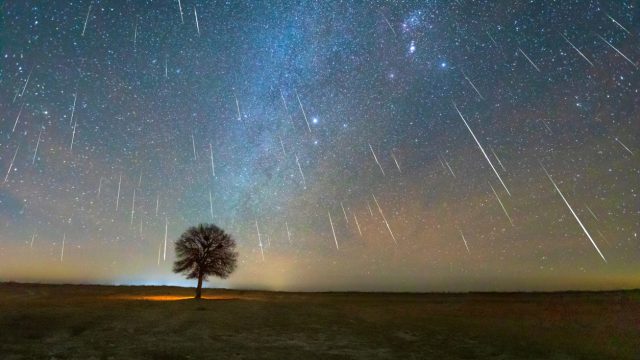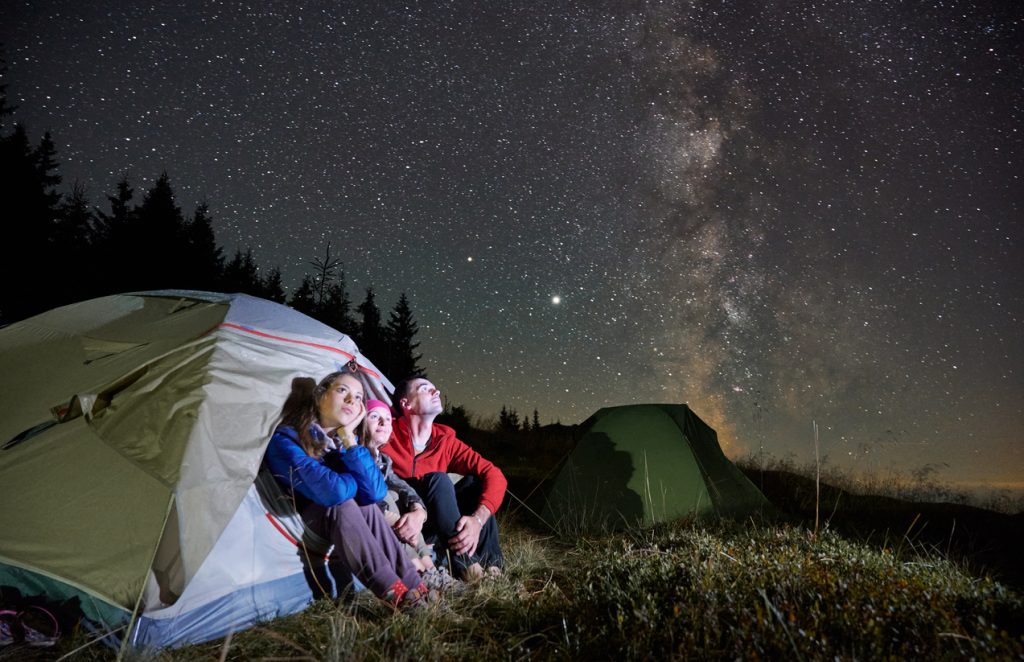Bright and Colorful Meteors Will “Fall Like Rain” This Weekend—How to See Them

Staring up at the night sky can be one of the easiest ways to appreciate nature and unwind, even if you’re not an astronomy expert. There may be plenty to see on any certain nights, whether it’s an exceptionally bright planet lighting up the heavens or an even rarer event like a lunar eclipse that you can see without using a telescope. And this weekend, the Leonids will bring bright, colorful meteors that could “fall like rain” across the sky. Read on for more on how you can see them and why this annual event is so special.
RELATED: Intense Solar Storms May Peak Faster Than Expected—What That Means for Earth.
The Leonids will fill up the sky with “bright” and “colorful” meteors this weekend.

Casual stargazers and amateur astronomers alike could be in for a treat over the coming days. The Leonids are beginning to ramp up in activity as the meteor shower reaches its peak over the weekend, according to NASA.
The annual event occurs in mid-November as Earth passes through the debris trail of the comet 55P/Tempel-Tuttle, a relatively small object just over two miles wide that orbits the sun every 33 years. The shower gets its name from its radiant point in the constellation Leo, which describes the quadrant of the sky the “shooting stars” seem to originate from.
The Leonids stand out as “bright meteors” that “can also be colorful” and some of the fastest seen in the night sky, per NASA. The larger particles that make up the comet’s trail also create “fireballs,” bringing “larger explosions of light and color that can persist longer than an average meteor streak.”
RELATED: 6 Stargazing Secrets, According to Astronomy Experts.
The shower could produce meteors that “fall like rain” across the sky.

Like other meteor showers, the Leonids can produce distinctly different shows from year to year. On average, stargazers can expect to catch about 10 to 15 meteors darting across the sky per hour during peak activity, according to NASA.
But the annual celestial event also stands out for occasionally creating some of the most stunning nighttime events ever recorded. Roughly every 33 to 34 years, the Leonids can cause what’s known as a “meteor storm,” in which 1,000 or more meteors will fall per hour, according to astronomy website EarthSky. Historically, the storm has even gone well beyond that, with a shower in 1833 reportedly bringing 100,000 “shooting stars” every 60 minutes.
It’s also responsible for one of the most dazzling celestial displays in living memory, thanks to an especially strong showing that took place in 1966, according to Earth Sky. Viewers reported seeing 40 to 50 meteors falling per second—which translates to 2,400 to 3,000 per minute—during a 15-minute period. This made “shooting stars” appear to “fall like rain” across the night sky, according to NASA.
RELATED: 8 Best Destinations for the Next (and Rare) Total Solar Eclipse.
Here’s how to get the best view of the Leonids when they peak in the coming days.

Even though the last reported meteor storm generated by the Leonids was in 2002, astronomers still expect the shower to create some beautiful visuals in the night sky. On top of the brilliant fireballs, stargazers can also expect to see “Earth-grazers” that pass low along the horizon with “long and colorful tails.”
Those hoping to catch the most activity should block off their calendars for the meteor shower’s peak late on the night of Nov. 17 through the early morning hours of the following day, according to EarthSky. This year’s storm also benefits from taking place days before a first quarter moon, meaning there will be less light interfering with visibility. But even with ideal conditions, experts say you’ll still want to set yourself up for success.
“People should look towards the east from a dark sky location. Think national forests, state parks, and other places far from big cities,” Theodore Kareta, PhD, a postdoctoral researcher at Lowell Observatory in Arizona, told USA Today.
He added that giving your eyes time to adjust after getting set up outdoors is also essential. “Some meteors can be faint, so in addition to finding a dark place to stare at the night sky from, you should also give yourself 20 to 30 minutes to let your eyes get used to the low-light conditions,” he suggests.
RELATED: 25 Space Mysteries No One Can Explain.
There are other celestial events worth catching this week as well.

While the Leonids will be taking center stage for a few nights, they’re not the only major celestial event of the week worth spotting. There are even other meteor showers to look out for. The North Taurid meteor shower will peak on Nov. 13, bringing an overlapping chance to catch “fireballs” in the night sky over the next few weeks.
And as the moon begins its earliest phases, viewers will likely be able to witness “Earthshine” on our orbiting neighbor on Nov. 16 and 17, Forbes reports. The term refers to light reflected off the Earth onto the moon that creates a ghostly glow along the darkened section of the moon, making it partially visible to the naked eye and even more so with binoculars or a telescope.
Those with a decent set of binoculars might also be able to catch a glimpse of another passing traveler. Comet Lemmon should be visible through Nov. 17, having recently reached its closest point to Earth, according to Astronomy.com. Using instruments should make the object’s coma—or glowing area around its nucleus—visible. You may also possibly be able to see a faint image of its tail in photographs.
RELATED: For more up-to-date information, sign up for our daily newsletter.